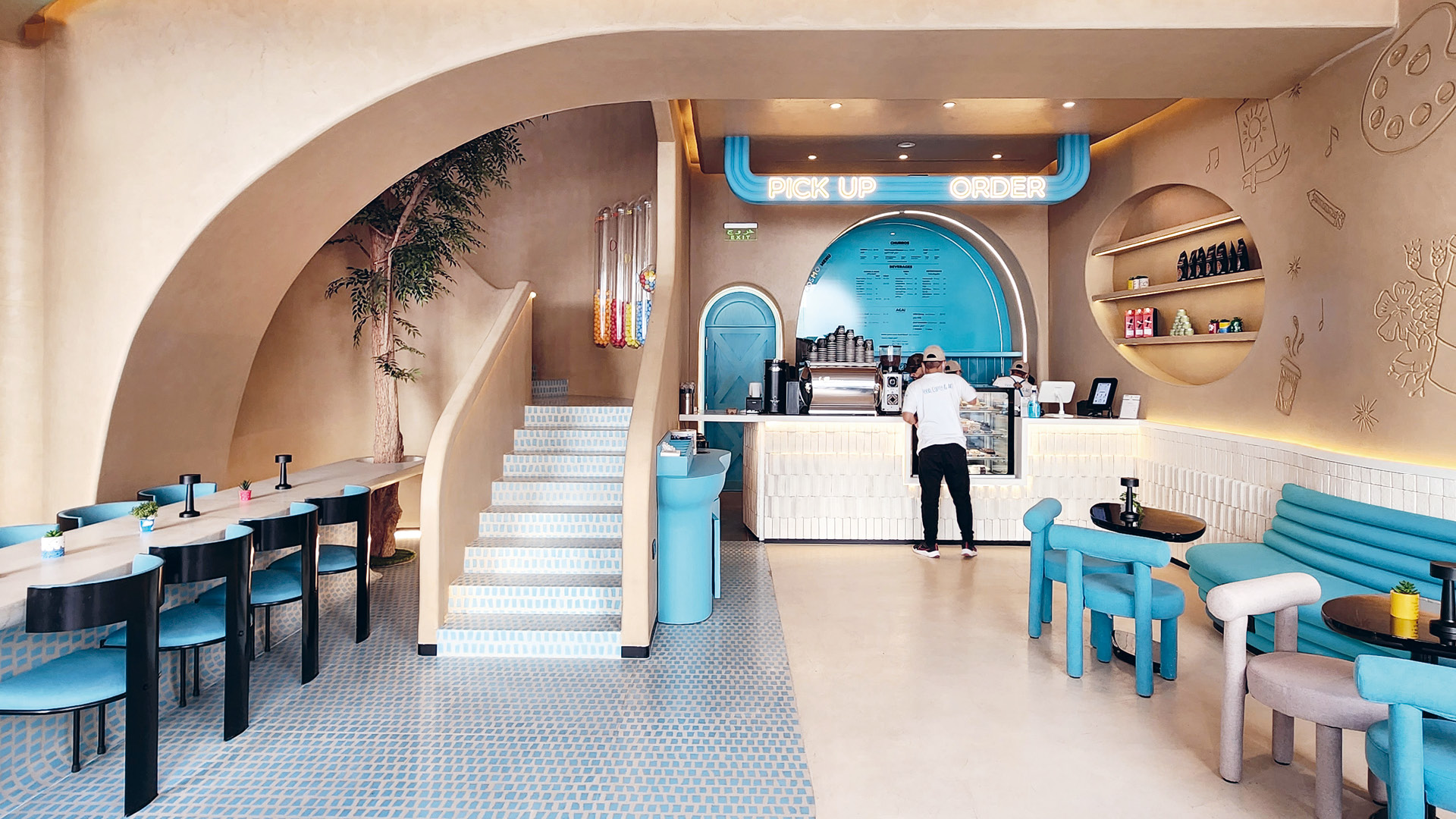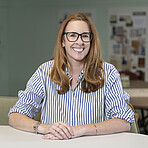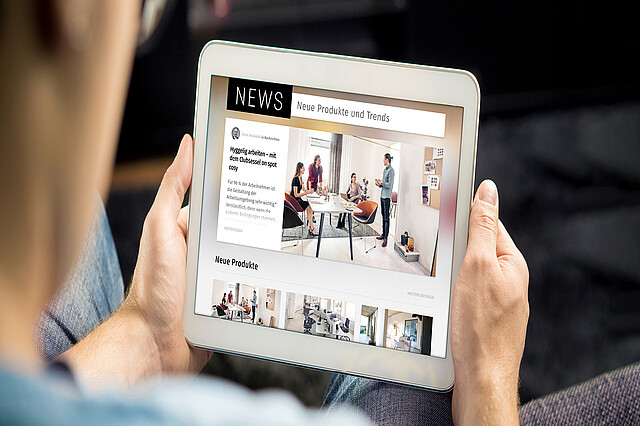We spoke to Firas Alsahin from 4Space Design, who designed the Work Café.
Publicly accessible workspaces in cities are becoming increasingly important today. In your opinion, what are the most important aspects when designing “Third Places” such as a work café?
The most important aspects are flexibility, comfort, and connectivity. Flexibility allows the space to cater to a variety of activities, from focused work to casual meetings. Comfort is crucial because it encourages prolonged use and ensures that people feel at ease in the environment. Connectivity, both in terms of technology and social interaction, is essential for fostering a sense of community and facilitating the exchange of ideas.
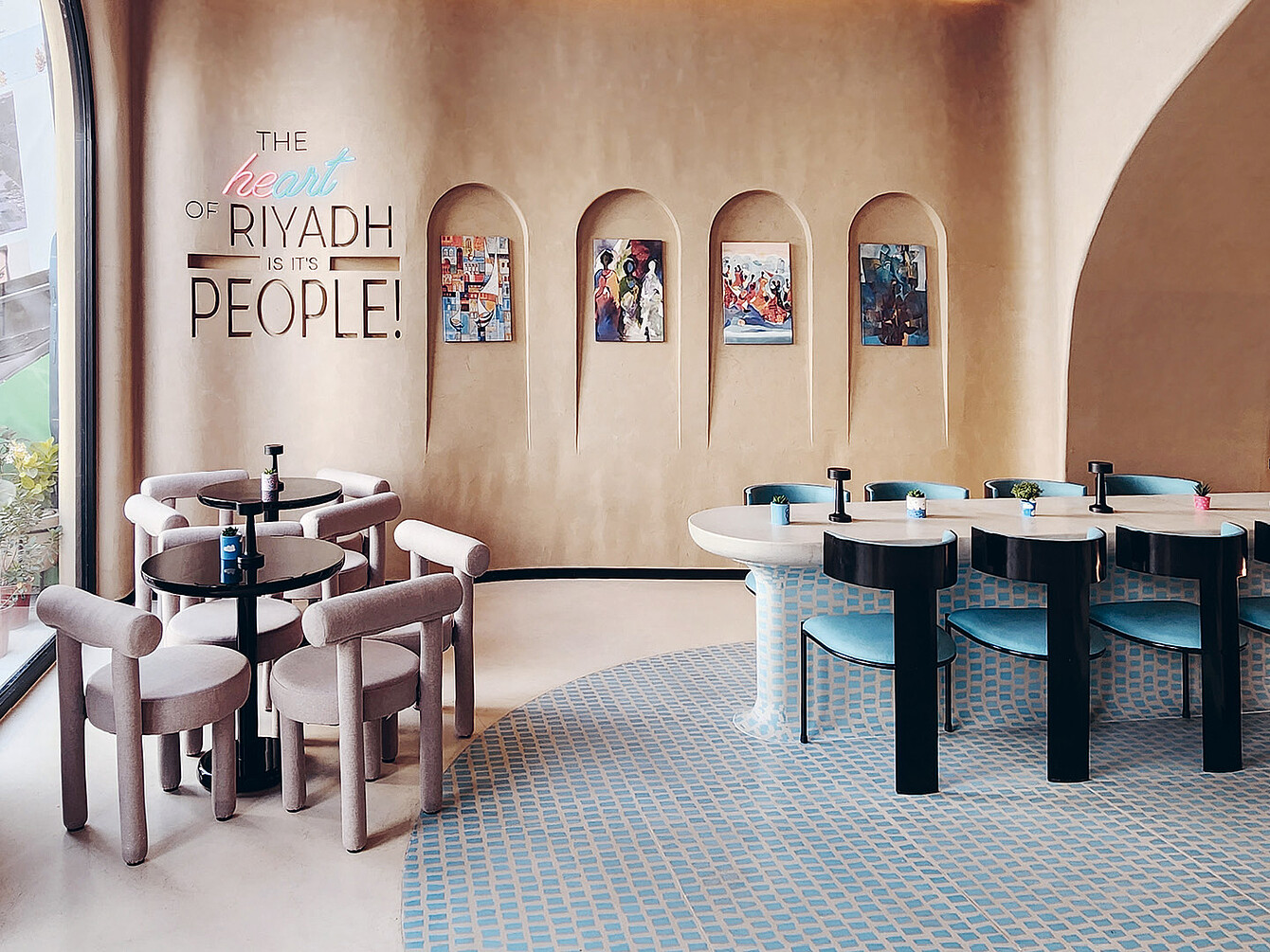
Variety through interior design
The Cosmo Café in Riyadh, which you designed, is used as a “Third Place” by artists and remote workers. What different work settings did you create in the work café and how did you proceed with the zoning?
In Cosmo Café, we created distinct zones that cater to various work styles and needs. There are quieter, more secluded areas for focused individual work, as well as communal tables that encourage collaboration and social interaction. We also included lounge areas with comfortable seating for informal meetings or relaxation. The zoning was carefully planned to ensure a natural flow within the space, allowing visitors to easily transition between different work settings depending on their needs. We used visual cues, such as changes in flooring material and lighting, to subtly guide people through the space and create a distinct atmosphere in each area.
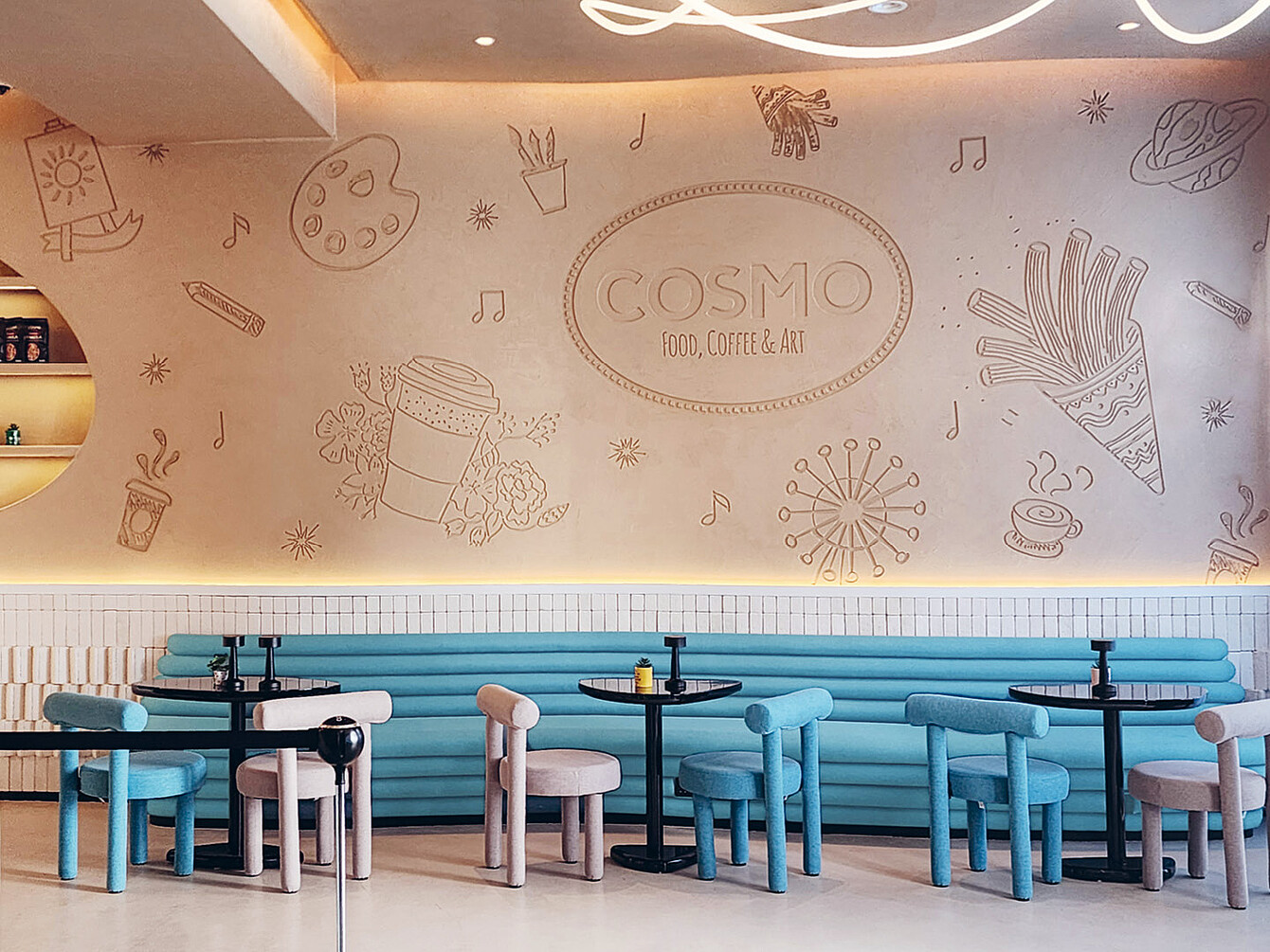
“My approach is often to combine organic shapes with modern elements to create environments that are both dynamic and inviting.” Firas Alsahin
The power of colours and materials
What role do colours and materials play in creating a suitable work café atmosphere?
Colours and materials play a fundamental role. In Cosmo Café, we chose an earthy colour palette with natural materials to create a warm, welcoming environment that promotes relaxation and creativity. The use of blue accents adds a touch of vibrancy and energy, which helps stimulate productivity. Materials like wood and terrazzo were selected for their durability and natural aesthetic, contributing to a sense of comfort and organic flow throughout the space. The interplay of colours and textures helps to define different zones and set the mood for various activities within the café.
I believe in designing spaces that tell a story, evoke emotions, and engage the senses, ultimately leaving a lasting impression on those who experience them.
In addition to the Cosmo Café in Riyadh, you have also realised a similar project in Al-Hasa. Is working in “Third Places” a trend that you are noticing more and more in the Arab region?
Yes, there is a growing trend in the Arab region towards using “Third Places” like cafés as workspaces. As cities continue to evolve and the way people work becomes more flexible, there is an increasing demand for spaces that offer the comfort of home, the connectivity of an office, and the vibrancy of a public space. This trend is not just limited to large urban centres; even smaller cities are seeing a rise in demand for well-designed “Third Places”.
Our project in Al-Hasa is a testament to this trend, reflecting the region’s broader shift towards more dynamic and adaptable work environments.
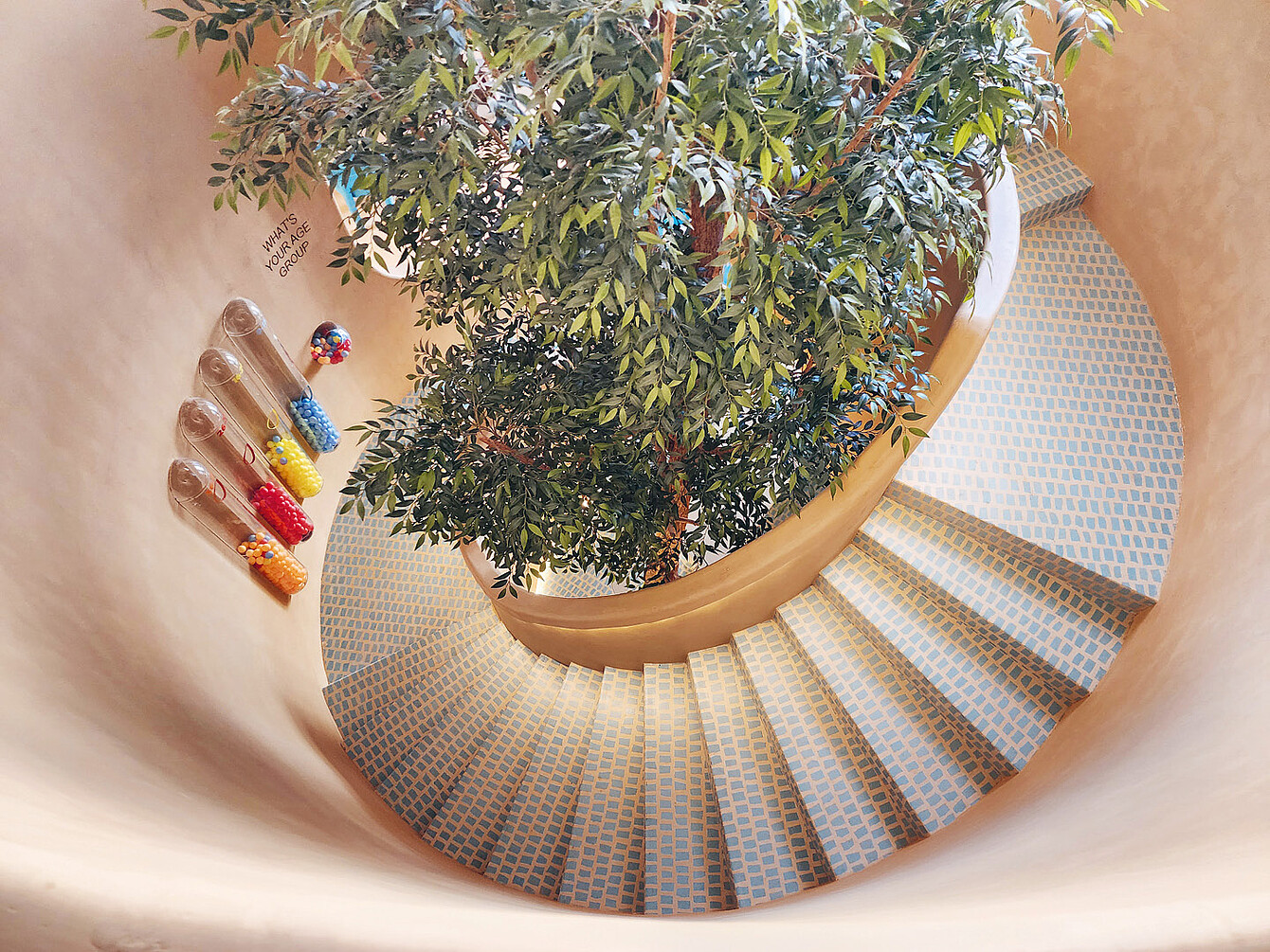
The tree in the Cosmo Café is an anchor point that holds the entire space together.
Organic shapes with symbolic power
You used a lot of organic shapes in the design of the Cosmo Café. What is your favourite design element?
My personal favourite design element in the Cosmo Café is the central tree feature. Positioned in the void of the staircase, it serves as a focal point that ties the entire space together. The tree not only adds a natural element to the interior but also symbolises growth and creativity, which are core themes of the café. It is a living, breathing part of the design that brings a sense of life and energy to the space, encouraging patrons to feel connected to their environment in a meaningful way.
Which designers or artists have inspired you the most in your career?
Zaha Hadid’s bold, futuristic designs have always been a major influence, particularly her use of organic forms and fluid spaces. Tadao Andō’s work, with its focus on simplicity, light, and the relationship between architecture and nature, has also deeply influenced my approach to design. I am also inspired by artists like Wassily Kandinsky, whose abstract work pushes the boundaries of conventional art, encouraging me to think outside the box and explore new creative possibilities.
How would you describe your own design style?
I would describe my design style as innovative, experiential, and human-centric. I aim to create spaces that are not only aesthetically pleasing but also functional and emotionally resonant.
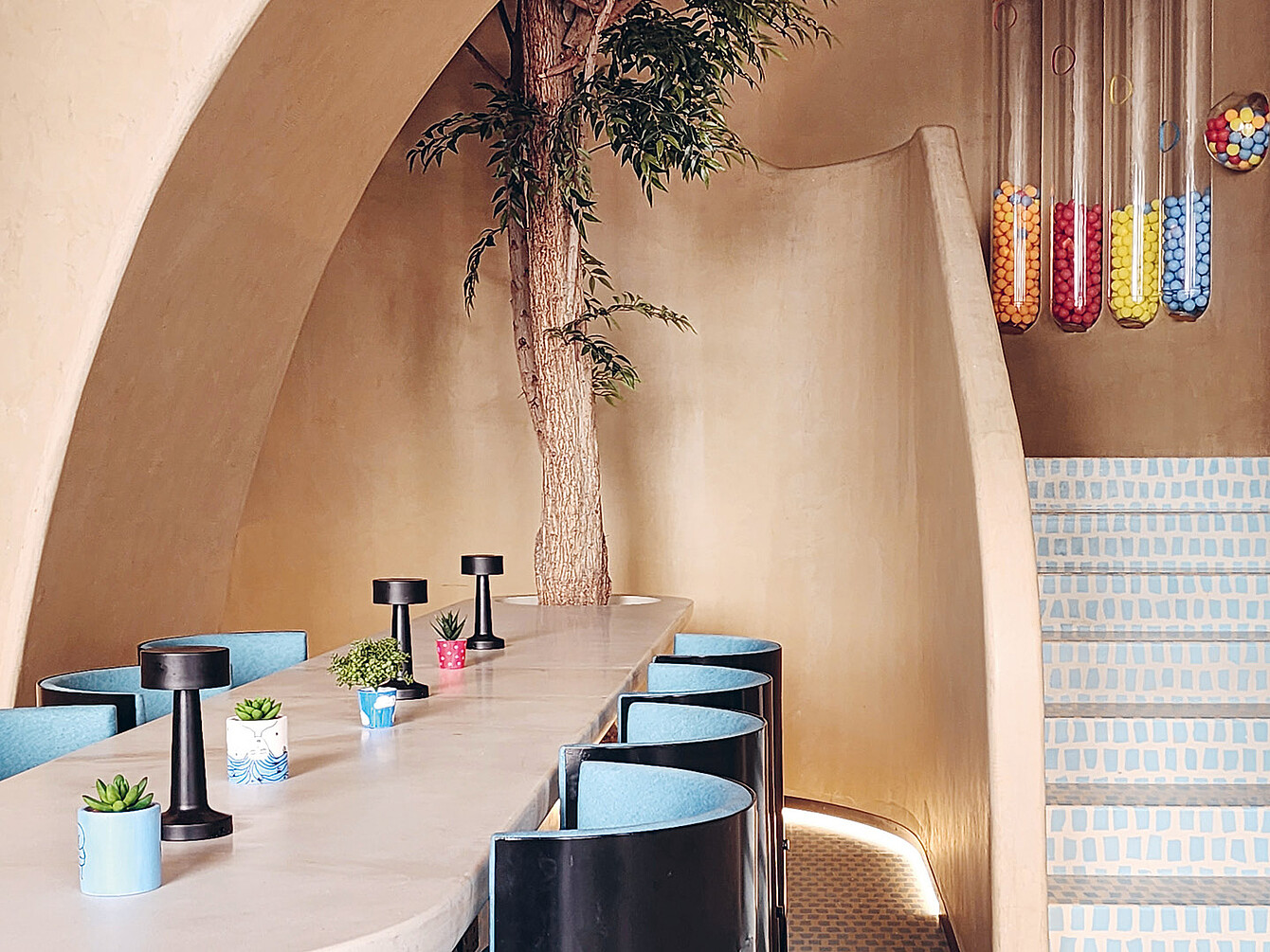
Cosmo Café has a communal table set up especially for artists. Here, they can sit together, collaborate and create art.
Conclusion: interior design as a cultural bridge
The Cosmo Work Café is an impressive example of how architecture, design and social needs can be merged. It is more than just a place to work – it is a space for encounters, inspiration and creative exchange. In times of increasing digitalisation and urbanisation, there is a particular need for such “Third Places” that promote human contact and bring cultural diversity to life. With the Cosmo Café, Firas Alsahin and 4Space Design prove how well-thought-out design can create a vibrant community.
The interview with Firas Alsahin was first published in the Sedus LOOKBOOK N° 02. You can receive the full issue of the magazine, by email, here.
social media channels:
